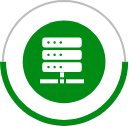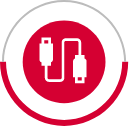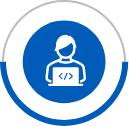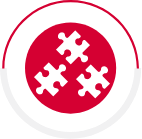BACKGROUND
According to WHO estimates, 46,000 people in Cameroon newly developed TB in 2020 (Global TB report, 2021), out of which 22,492 cases were notified. [1] With over 11,000 of all people with TB- are also infected with HIV, Cameroon is included in the list for the top 30 TB/HIV high burden countries. [2] Children account for nearly 5% of all cases, and many also suffer from TB-HIV coinfection.
These numbers have been on the decline for the last decade (Global TB report, 2021) [1] . In line with WHO’s End TB strategy, Cameroon has achieved a treatment coverage of 48% of all people living with TB in 2020 (for reference, the target is 90% by 2030) and the TB case fatality ratio stands at 37%. 43% of the children (aged < 5 years) that are household contacts of bacteriologically-confirmed TB cases have been put on preventive treatment.
Under the COVID19 pandemic, the TB case notification in Cameroon was impacted and the numbers reduced to lower than 2019, however, the country is now reviving its surveillance practices and the overall notification trend shows a steady improvement in 2021.
While case-based TB data is currently managed in excel sheets and only aggregate data is fed into the TB component of the national HMIS (DHIS2), the NTP is developing an implementation plan for a DHIS2-tracker model that can integrate multi- facility data to enable a versatile and interoperable data management system.
With close support from University of Oslo and WHO, Cameroon has been working on adapting the standard DHIS2 TB Tracker reporting module according to the local treatment guidelines and is soon planning to pilot the system in 180 facilities.
While funding continues to be supported through the Global Fund (as well through GAVI and WHO for associated immunization programs, and through PEPFAR for HIV/AIDS), HISP Central Africa, the University of Oslo and the WHO continue to offer technical guidance for building and customization of the system.
Leadership of the in-house technical team at the Ministry of Public Health has made feasible an implementation plan for scale up of the proposed DHIS2 tracker model for case-based TB surveillance at all facilities. This would further enable the use of advanced DHIS2 data analytics, starting right at the facility level. Additionally , to complement the existing national HMIS data systems , the TB Data from DHIS2 can easily be integrated as indicators which enable comprehensive data review and analysis of TB data nationally. The application is currently owned by the Ministry of Public Health and hosted at the Health Information Center (MoH), but NTP expects more system ownership and to maintain it in-house, for which their staff would require relevant training.
It is known that technology penetration plays a vital role in enabling the evolution of information systems from paper to digital solutions. In Cameroon, while 95% of the population has a cell phone, the smartphone use is still about 40% and internet penetrance is close to 34%. It thus becomes crucial for the country to augment this infrastructure and technologies which support online / offline data capture mechanisms for improving the digital literacy and at the same time creating a strong ground to implement advanced solutions and ensuring their adequate uptake.
Based on the multi-stakeholder discussions, interviews and independent research, and guidance from the National TB Program, this assessment report attempts to produce clear recommendations and way forward towards developing a comprehensive case-based TB surveillance system while leveraging the existing infrastructure, in-house capacity and assets. Detailed recommendations are provided in the later section of this country report.

STATUS OF CASE BASED TB NOTIFICATION
Currently the National TB program uses DHIS2 used for aggregate TB notification, for both DR TB and DS TB. Paper-based data is collected at facilities and transferred to the regional level to be entered into DHIS2 on a quarterly basis. This data reporting is only in the aggregated form currently.
In line with country’s vision outlined in the NSP 2020-24 to establish an electronic case-based data recording system, the HMIS is undergoing a transition to integrate the complete cascade of care by using a DHIS2 tracker data model. Currently, aggregated TB datasets only capture cases initiated on treatment. The tracker model will expand this to register all patients, including presumptive TB cases.
Implementation of the current aggregated model across all the regions through standard data collection tools across 261 facilities and receiving 100% data reporting from the private sector as well.
In efforts to strengthen MDR-TB management, GeneXpert has become progressively more available throughout the entire country, allowing an increase in the number of re-treatment cases tested from 17 percent in 2010 to 81 percent in 2017. GeneXpert sites are connected through a server at the NTP, and data is transmitted in real time to clinicians. It is further supported by a sample transport system; training of nurses; supervision of sites by doctors; and the transfer of skills to lower-level cadres. Results have shown a success rate of about 82 percent in the 425 cases treated overall since then.

ELECTRONIC TB NOTIFICATION DATA COLLECTION AND USE
| TARGET | CURRENT SCALE | COLLECTION TOOLS | DATA TYPE | DATA USAGE | |||
|---|---|---|---|---|---|---|---|

National Level
|
Data Not Collected from this level
|
DHIS2 Dashboard | |||||

Regional
level
|
10 | 10 | DHIS2 (National HMIS) and Excel | Aggregate | DHIS2 Dashboard | ||

District Level
|
197 |
Data Not Collected from this level
|
DHIS2 dashboard | ||||

Facility
Level
|
307 (261 effective facility reporting) | 307 | Paper based | Aggregate | No Data usage at this leve | ||

Community Level
|
Data not collected from this level | No Data usage at this level | |||||

CASCADE OF CARE MONITORING
PRESUMPTIVE SCREENING
TB Testing
Treatment Initiation
Treatment Monitoring
Treatment Outcome
Contact Tracing






| KEY DATA VARIABLES | Yes/No |
|---|---|
| Demographic details (Age, DOB, Gender) |
|
| Address and contact details (Country, Division, District, House address) |
|
| Geolocation (GPS coordinates of the household) | |
| Contact details (Phone number/Mobile number, WhatsApp, Email etc.) |
|
| Health Facility address | |
| Type of health facility (Public, Private etc.) |
|
| Site of TB (Pulmonary, Extra-pulmonary) |
|
| Type of diagnostic test (Microscopy, GeneXpert, TruNaat, CXR, etc.) |
|
| Date of test result | |
| Drug susceptibility (DSTB, DRTB) |
|
| Treatment Regimen | |
| Treatment start and end date |
|
| Co-morbidity (HIV, Diabetes, COVID-19 etc.) |
|
| Treatment monitoring/adherence |
|
| Treatment outcomes |
|
| KEY INDICATORS | Yes/No |
|---|---|
| Presumptive screening (proportion) | |
| Treatment initiation (proportion) |
|
| Treatment monitoring/adherence | |
| Treatment outcome (proportion) |
|
| Spatial distribution of TB notification | |
| Age-group & sex wise aggregate numbers and proportions notified |
|
| Basis of diagnosis wise aggregate numbers and proportions notified |
|
| Type/site/drug resistance wise aggregate numbers and proportions notified |
|
| Provider source-wise aggregate numbers and proportions notified |
|
| Comorbidity wise aggregate numbers and proportions notified | |
| Key-population wise aggregate numbers and proportions notified | |
| Estimate/Target wise notification/treatment coverage (proportions) |
|
| Provider-type disaggregated treatment outcomes (proportions) |
|
| Comorbidity disaggregated treatment outcomes (proportions) |
|
| Key population disaggregated treatment outcomes (proportions) |
 Digital
(aggregated)
Digital
(aggregated)
STATUS OF ELECTRONIC CASE BASED TB SURVEILLANCE
Electronic System For Case Based TB Notification

None. DHIS2 used for aggregate reporting
Lowest Unit For TB Notification Digitisation

Regional level
Stage Of Notification

Treatment initiation stage
Level Of Access And Use Of TB Notification Data

District level
Private Sector Notification

Manual notification process
Frequency of digitization of TB notification

Quarterly
Mode Of Follow-Up With Notified Cases

Manual follow-up: phone calls, physical visits
Scale Of Implementation

DHIS2: national rollout
Contact Tracing For TB Notified Cases

CETA project – regions covered under pilot
Multi-Channel Enablement

None
Govt. order for mandatory TB notification

None
PRIVATE SECTOR NOTIFICATION

With the private sector being governed by the same rules as public facilities (falls under the MoPH structure), private providers provide 100% data on TB notification to the public system through manual route, and will also have a direct access to the system when the DHIS2 tracker model is adopted.
COUNTRY IT CAPACITY

Country Server
National DHIS2 platform is managed centrally by the Health Information Center at MoPH

Interoperability
DHIS2 as a platform provides APIs for interoperability, but yet to be integrated with other tools

Country IT team
Ministry of Health has a Health Information Center unit that hosts and manages the application centrally
CURRENT RESOURCES AVAILABLE
The National TB Program’s primary source of funding is through the Global Fund grant (support available till 2023). This totals to USD 11.9 million as in 2018-20, when TB programs were supported through HIV/AIDS funding from PEPFAR and PMI.

MILESTONES ACHIEVED AND ROAD MAP
2010
Pilot of eTB manager at 6 health facilities
2018 - 2019
DHIS2 aggregate system and DHIS2 Dashboard were developed
2020
Training done of all NTP Staff (including central level) and additional form for aggregated data on Logistic management added in DHIS2
2021
DHIS2 tracker pilot for case based reporting in 280 facilities
2022
Scaling up of DHIS2 tracker for case-based TB surveillance in all facilities, involving advanced DHIS2 dashboard and analytics at facility level. Implementation of contact tracing module.
2023
Integration of GeneXpert with the national HMIS platform through GxAlerts. Developing an interoperability plan.
2022-24
Nation wide scale up of eTB manager, Increased focus on Data quality, Transfer of eTB manager hosting from MSH to DGHS MIS servers, Exclusive ownership of TB notification system by NTP

OTHER COMPLEMENTING DIGITAL TOOLS
| Purpose | Tools | Channel | Developed By | Supported By | Scale |
|---|---|---|---|---|---|
| Digital Adherence | Nil | NA | NA | NA | NA |
| Logistic Management | DHIS2 dataset | Web Application | Ministry of Health | The Global Fund | National |
| Laboratory Information Management | GxAlert | Web Application | Aspect | Stop TB Partnership | National |
| DataToCare | Web Application | Savics | The Global Fund | National | |
| Community Led Monitoring (CLM) | Nil | NA | NA | NA | NA |
| Contact Tracing | Household Survey | NA | NA | CETA Project | 6 out of 10 Regions |



KEY CHALLENGES

NTP currently relies on the Health Information Unit of the Ministry of Health for system hosting and maintenance. The in-house IT team’s capacity is inadequate to manage DHIS2 customization at their end.

DHIS2 dashboards are available and accessible from the national to regional level, however the use for program monitoring by health professionals remains very low. Excel data is considered more reliable, and hence used it routinely.

Current programme M&E practices are significantly inadequate to execute the plan of implementing a case-based system.

Internet availability is a major concern. Its unreliability affects data entry and analysis.

With the current data collection only limited to the cases put on treatment, crucial data points like screening, specimen transport and testing get missed out in the data outputs, producing limited knowledge to improve service provision.

Moving to a direct digital reporting from facility level would be a shift in the mode of work for the TB staff, and hence requires a sustained availability of funds to support both the hardware availability and capacity building for using digital tools.

NTP VISION
- ❖ As part of the National Strategic Plan for 2020-24, the NTP plans to develop and implement a DHIS2 case based tracker system for TB notification.
- ❖ Strengthening the IT system administrator at NTP and training health facility staff to shift data entry from the level of the region to the facility.
- ❖ Improving the vigilance on data quality in TB reporting.
- ❖ Ensuring internet and other IT infrastructure availability at all health facilities to enable real time data entry.

RESOURCES NEED
Based on multi-stakeholder discussions, country feedbacks and recommendations for full-filling country’s vision, we have put together an estimated investment requirements and areas needing support for provisioning of a comprehensive case based digital TB surveillance system.
Hardware and Infrastructure :

Mobile Devices (for data collection): Cameroon has 307 TB facilities and to provision mobile device for every facility for case-based TB surveillance, USD 46,050 will be needed assuming USD 150 per mobile devices.

Tablet (for data use): Cameroon has 197 districts and 10 regions. To promote active data use, each district and region should be given a tablet which would cost roughly around USD 41,400 assuming USD 200 per Tablet devices.

Internet: In case WiFi is not available in each facility, then mobile internet cost of around USD 154,200 should be considered (assuming USD 100 mobile data cost for the entire year per facility, district and regional user).

Server: Based on the current volumes of new cases, Cameroon would need an investment of USD 30,000-40,000 for next 3 years for server and server maintenance.
Note: Existing devices available through other health programs can be leveraged. In that case, the above-mentioned costing can be accordingly considered.
Software Development :

Based on various multi-stakeholder meetings and given the fact Bangladesh already have a strong foundation for DHIS2 aggregated system for TB, around USD 50,0000-1,000,000 should be budgeted for a comprehensive TB surveillance system and analytical dashboard for data use.
Capacity Building and Implementation :

After the software development, a dedicated pool of technical resources will be needed to support platform administration, data management and support. A team of 4-6 skilled resources attributing to a cost of around USD 48,000-72,000 per annum should be budgeted (or USD 144,000-216,000 for 3 years assuming USD 1,000 per month per resources). Additionally, reskilling of the current IT team should be budgeted.

Training: This would involve training material development and onsite and remote training of the trainers. Training sessions should be planned for each 197 districts over a period of 3 years which could cost roughly USD 100 per training amounting to USD 19,700. Also, a dedicated trainer should be budgeted in case there is none. E-training options with necessary modules also need to be considered.
TOTAL investment of around USD 1.5 - 2 million for 3 years will be needed on developing a comprehensive case-based digital TB surveillance system for Cameroon.
Disclaimer: The above budget is a function of number of facilities, districts and regions and expected volume of data. This only provides a ballpark figure of what is needed in terms of budget.

The NTP goal is to use data for effective decision making. Digital data surveillance is the gate way in closing the gaps in our patient care pathway for an efficient and effective health system.


Cameroon

Dr. Bisso Ngono Annie Prudence|NTP Manager

Recommendations
Following are some of the key recommendations suggested based on the findings of this assessment of country’s digital ecosystem and infrastructure:

Strategic Costing Plan
As a first step it is important for the country to create a comprehensive costed action plan for development, implementation and scale up of the TB case based surveillance system.
Based on NTPs vision and the recommendations for improvements , the plan should clearly define targets with actionable interventions and funding requirements supported with a detailed work plan with timelines. The plan will help the country to assess and monitor the progress and to mitigate risks
Tentative timeline: Month 0-1

Mobile App
One of the challenges reported by the NTP during the assessment is inconsistent internet connectivity/network issues and the lack of availability of real time data for stakeholders. One effective way to overcome this is to support the current data collection processes by introducing a mobile application, which is in line with the country’s efforts of improving the overall digital ecosystem.
One effective way to overcome this is to support the current data collection processes by introducing a mobile application which will help the data entry process easier and also has feature to store data offline which can then later be synched with the central systems .
The advantages for a mobile application include better performance, effective use of device features like in house system updates, usage of location, security measures and tracking user patterns and issue log mechanisms and other analytics measures.
In line with with the current system design and NTP’s ongoing procurement of Compbook laptops (with SIM cards) , the latest DHIS2 mobile app version should be evaluated. This app also has additional features on data collection , security ,offline data collection , encryption ,version management etc should be evaluated which would easily extend to the current systems.
This would also ensure that the data structures are consistent. Also, the app is supported with a configurable set up to support any updates / changes to the program.
Additionally, the DHIS2 mobile framework uses open-source technologies like Java, Postgre, React and Android, there are easily supported by country IT teams also the standard best practices of mobile development like version management , data encryption etc which make this as more robust solution.[6]
Tentative timeline: Month 0-6

Implementation of TB Case-based notification system
In line with country’s vision outlined in the NSP 2020-24 ,Cameroon has already developed core infrastructure in terms of database and deployment environment for DHIS2 in form of the country HMIS, which lays a strong foundation for executing the vision of creating a comprehensive and integrated real-time case-based TB surveillance and notification system.
It is recommended that this existing capacity is leveraged for developing DHIS2 tracker for creating case-based notification system which accommodate monitoring of entire continuum of care for both DS TB and DR TB patients starting from presumptive screening, referral, testing, treatment initiation, treatment adherence, treatment outcome and contact tracing in real-time.
The solution architecture should support adding all the above components in phases supported with versioning to ensure seamless upgrades and continuity.
Some of the existing templates already built on DHIS2 tracker systems currently being used by other countries such as WHO’s prevent TB tool or other DHIS2 tracker-based systems can be explored for fast-tracking the software development processes. [7]
Tentative timeline: Month 0-12

Data Integration
Another key area highlighted by NTP is the leveraging of data collected from the multiple sources like the excel files maintained at the facilities without any data loss.
There may also be some other distributed data collection systems and processes which are existing, and it might be difficult to replace them, in such a scenario data can be extracted, transformed and loaded into the central repository.
This DHIS2 data transformation API feature also offers creation of standard templates which can be easily mapped with external data collection tools. [8.1] , [8.2] Apart from this it also supports batch upload for historical data for large volumes to ensure minimum disruption to the live systems.
Other source ETL tools over Postgres DB and / or WHO powered XMart [9] which can be installed within the current environment can also be considered.
Tentative timeline: Month 0-6

Data Use
Building on the current DHIS2 visualization module which offers a comprehensive dashboard for reviewing of program and data indicators, additional features of pivot table , event reports which support dimensions , data aggregation reports and individual line lists and with timeline views are extremely useful.
Once a robust data analytics and data use model has been established with the current DHIS2 and other systems then a more advanced analytical dashboard should be designed linked to the new case based TB surveillance system that is already being planned.
The current DHIS2 platform offers APIs which can connected for these applications and be used as an extended analytical component of the data analysis framework. [10]
Tentative timeline: Month 6-12

System Integration
As visioned by the national TB program with the concept of an integrated Health Information Management System (HMIS) , leveraging the current platform and foundation , basic integration and data exchange mechanisms should be worked out to avoid duplication of efforts and complement the existing data systems.
The current DHIS2 platform and infrastructure needs to be extended to support integration with external systems like GeneXpert, TruNat, Digital X-Ray outputs, Pill boxes and other adherence tools which help in use the data effectively for the patient care continuum as highlighted by the National program.
Recommended exchange / ETL tools like Talend and Informatica which include these features make the data management task much easier and simultaneously improve data warehousing. [11.1] , [11.2]
The DHIS2 platforms architecture is easily compatible with these standard tools and processes making this an effective solution. [12]
The data exchange process should follow and comply with FHIR , GDPR standards for more secured and seamless data exchange.
Tentative timeline: Month 6-18

Data Quality
NTP clearly emphasizes on the importance and need to introduce improved data collection practices and validations to avoid data duplicity and redundancy for better data quality
Some standard recommendations include
✓ UIC Code : Having a centralized Unique Patient ID system or leveraging existing national ID supported with an improved search functionality can help drastically reduce the duplication of case-based records. This should be generated automatically through the new case-based TB surveillance system that is already being planned.
✓ DHIS2 data de-duplication feature should also be explored which would enable restriction of multiple case data entries based on patient profile and other variables configuration.
Additionally , as part of standard practices, the application(s) / solutions should follow the data quality mechanisms or the Data Quality Assurance (DQA) framework. [13] Some recommendations include:
✓ Data Validations for data inputs at every level
✓ Retrieval of existing user driven values / attributes to avoid data discrepancy
✓ Smart follow up questions to validate previously entered data
These standard practices are configurable using the DHIS2 ruleset feature which is applicable to both web / mobile app interfaces. This will ensure that the data collected from multiple sources is in a standard structure and format.
Data access control is another DQA measure that will regulate user’s access to meta-data. It will involve the principle of least privilege (POLP), i.e., user’s access will be determined based on their role in the project. POLP will define and limit what data they have access to and who has that access. [14]
This can be implemented using the DHIS user access and data management feature for restricted data access and control. Apart from this DHIS2 admin also has privileged access to configure the user data roles
Tentative timeline: Month 3-6

E - Learning
Digital training packages to train health professionals on DHIS2 data entry, information use, M&E and workflows:
To address the challenges with periodic training of facility level staff to orient them on using DHIS2 for direct data reporting, the MOH must engage in development of a comprehensive eLearning module for app training.
While DHIS2 offers standard training modules on the application , training tools like Moodle [15] built om standard LMS framework can be reviewed for application rollouts.
Additionally for training and updates on the latest manual of procedure and continued medical education on TB care modules can be developed for TB Health providers , administrators at facility and district level to develop and enhance M&E competencies for ensuring a consistent program oversight, especially for the case-based tracker roll out within the existing applications.
Guide TB platform developed by WHO Philippines is a good example of eLearning module for health staffs involved in TB care.
Tentative timeline: Month 0-3

Capacity building for application upgrade and server maintenance
One of the main challenges highlighted by the NTP is the ongoing maintenance and enhancements of the platform. Since the application requires regular updates and to ensure effective adaptation and scale up the system support team requires trained personnel on DHIS.
Strengthening the NTP team with DHIS2 trained system administrators will help in improving and expediting the planned implementations.
Tentative timeline: Month 6-24

Device Procurement
One of the limitation highlighted by NTP is the need to improve the hardware availability at the facility level. To streamline this, procurement, distribution and maintenance of the required data entry equipment like laptops, mobile/tablet devices should be done on an urgent basis. Improving the current infrastructure at the facilities is crucial for a complete transition to digital notification.
Tentative timeline: Month 0-6

Contact tracing application implementation
To strengthen the TB surveillance efforts of the country and for reaching out to all TB positive individuals, an active focus on contact tracing becomes crucial. The standard guidelines for household screening can be incorporated as a module in the national TB notification tool and be implemented to fast track the country’s efforts to eliminate TB and target the initiation of preventive treatment for all TB contacts.
Tentative timeline: Month 6-12

Strategic Technical Recommendations
Application Upgrades including Server Augmentation & Infrastructure Upgrades : To make sure that systems implementation and scale up of application is supported well, the key need is to have a long-term strategic plan that would cover the technical and operational objectives.
The strategy recommended would cover the following core areas
✓ Technical Upgrades: Based on the architecture, the upgrade would be done with the database, a middleware system, the operating system or the hardware.
Additionally, the architecture should support the integration layer which would be needed for data exchange with other national / external systems. The technologies that need to be brought in and the areas of inter-connection need special focus.
Recommended data system architecture would include updating the version of the current DHIS2 to 2.34 which offers better features on data management , encryption and exchange standards.
Additionally, the advance admin features offered by this version help the administrators to support the operational needs better for onboarding users , real time change in data variables and user management etc effectively.
Apart from this version 2.34 also supports compliance to GDPR standards and offers more controlled data encryption practises. [16]
✓ Performance Optimisation & Testing : To support the national scale up and implementation strategies it is very essential to have system(s) and application testing done to enable a reliable platform and which also helps in architecture updates and augmentation.
While core teams from the user community who are involved in the testing learn and automatically get trained, Automated System and Application Testing tools like Selenium and Appium can be used. Load Testing tools which helping in data base sizing and planning need to be adapted for effective planning . [17.1] , [17.2]
✓ Application & System Security Audit
To strengthen the current systems framework and ensuring long term sustenance it is important to have regular evaluation of the security of the information and systems by measuring how well it conforms to an established set of criteria.
These would also include developing a framework which should outline policies in line with recommended standard policies like HIPAA [18.1] , [18.2] to country specific policies over.
• Patient Data Management
• Server & Infra guidelines
Apart from application measures offered by DHIS2 [19] for patient data security , hosting solutions offered from Azure also cover these as part of their deployment options which can be considered as part of systems hosting. [20]
ACKNOWLEDGMENT
We thank the National TB Program Manager Dr. BISSO NGONO ANNIE PRUDENCE and Dr. Mbassa Vincent and the entire team for participating and engaging in the assessment. We would also like to extend our gratitude to Mr. Titahong Nosoh Collins for providing valuable insights into Cameroon’s vision for creating a comprehensive case-based TB surveillance and notification system.
CONTACT DETAILS
National Tuberculosis Control
Program
Hôpital
JAMOT CENTER REGION
Bamenda, North West region
Cameroon
Telephone : +237 33361103
Email : contact@pnlt.cm
Website : https://www.minsante.cm/
REFERENCES
- TB Data References : https://worldhealthorg.shinyapps.io/tb_profiles/?_inputs_&entity_type=%22country%22&lan=%22EN%22&iso2=%22CM%22.
- TB Data References : http://www.stoptb.org/countries/tbdata.asp.
- TB Data References : https://www.ncbi.nlm.nih.gov/pmc/articles/PMC6605634/.
- Digital Landscape : https://datareportal.com/reports/digital-2020-cameroon.
- Digital Landscape : https://datareportal.com/reports/digital-2021-cameroon.
- DHIS2 Mobile App : https://dhis2.org/android/
- DHIS2 Meta Data Tools : https://dhis2.org/metadata-package-downloads/#tb
- DHIS 2 API & DHIS2 Data Transformation Services : https://docs.dhis2.org/en/develop/using-the-api/dhis-core-version-235/web-api.html , https://docs.dhis2.org/en/use/user-guides/dhis-core-version-236/maintaining-the-system/importexport-app.html
- WHO Xmart : https://portal-uat.who.int/xmart4/docs/general/Overview.html,
- DHIS2 Power BI : https://community.dhis2.org/t/dhis2-to-powerbi-connector-is-ready-check-out-the-video-test-it-use-it-and-give-us-feedback/37043
- System Integration Tools ( Talend , Informatica ) : https://www.talend.com/index.php , https://www.informatica.com/
- DHIS2 Communities on DHIS2 using GDPR guidelines : https://community.dhis2.org/t/how-does-dhis2-protect-personal-information-the-tech-details/5335
- DQA Guidelines : https://www.who.int/data/data-collection-tools/health-service-data/data-quality-assurance-dqa
- DHIS2 & DQA : https://dhis2.org/who-dq/
- Application Training Tool : https://moodle.org/,
- Features of DHIS 2.34 : https://dhis2.org/overview/version-234/
- Performance Tools ( Selenium , Appium ) : https://appium.io/ , https://www.selenium.dev/ https://www.hipaajournal.com/considered-phi-hipaa/
- HIPAA Compliance Framework : https://www.hhs.gov/hipaa/for-professionals/security/laws-regulations/index.html , https://www.hipaajournal.com/considered-phi-hipaa/
- DHIS Security : https://dhis2.org/security/
- Azure Hosting Services : https://docs.microsoft.com/en-us/azure/compliance/offerings/offering-hipaa-us



